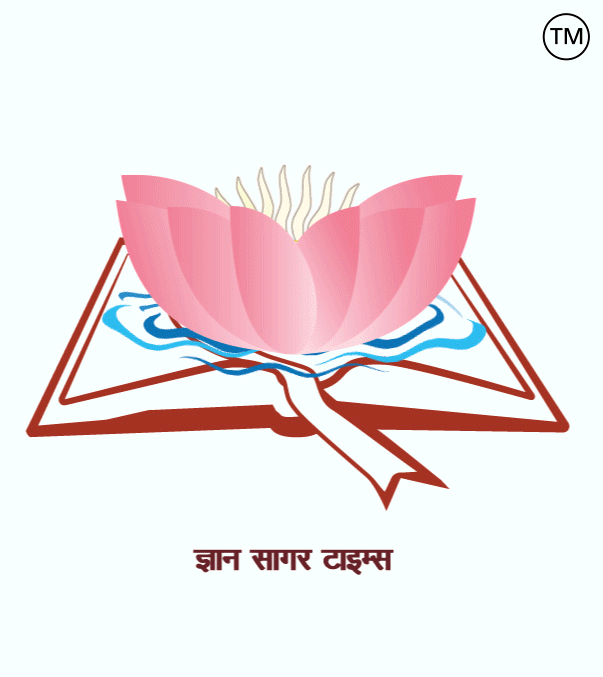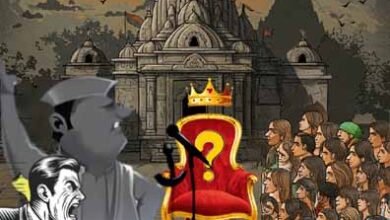
ऑपरेशन ब्लू स्टार…
ऑपरेशन ब्लू स्टार भारतीय इतिहास की सबसे विवादास्पद और संवेदनशील सैन्य कार्रवाइयों में से एक है. 1 -10 जून 1984 के बीच भारतीय सेना द्वारा चलाए गए इस अभियान का उद्देश्य पंजाब के अमृतसर स्थित हरमंदिर साहिब (स्वर्ण मंदिर) परिसर में छिपे खालिस्तान समर्थक अलगाववादी नेता जरनैल सिंह भिंडरांवाले और उनके सशस्त्र समर्थकों को बाहर निकालना था. यह घटना भारत के राजनीतिक, सामाजिक और धार्मिक परिदृश्य पर गहरा और स्थायी प्रभाव छोड़ गई.
वर्ष 1970-80 के दशक की शुरुआत में पंजाब में खालिस्तान आंदोलन जोर पकड़ रहा था, जिसका उद्देश्य सिखों के लिए एक स्वतंत्र राज्य ‘खालिस्तान’ बनाना था. इस आंदोलन को जरनैल सिंह भिंडरांवाले का समर्थन मिला, जो दमदमी टकसाल के प्रमुख थे और धीरे-धीरे एक प्रभावशाली धार्मिक नेता बन गए. भिंडरांवाले और उनके समर्थक, जो पहले ही कई हिंसक घटनाओं में शामिल थे, ने स्वर्ण मंदिर परिसर को अपना मुख्यालय बना लिया था और भारी मात्रा में आधुनिक हथियार और गोला-बारूद जमा कर लिया था.
पंजाब में बढ़ती अलगाववादी और आतंकवादी गतिविधियों ने तत्कालीन केंद्र सरकार के लिए एक गंभीर चुनौती खड़ी कर दी थी. स्थिति इतनी खराब हो चुकी थी कि कानून और व्यवस्था पूरी तरह से चरमरा गई थी. वर्ष 1983 में पंजाब पुलिस के डीआईजी ए. एस. अटवाल की हत्या और उसके बाद कई निर्दोष लोगों की हत्याओं ने सरकार पर कार्रवाई का दबाव बढ़ा दिया. भिंडरांवाले की बढ़ती लोकप्रियता और स्वर्ण मंदिर परिसर को एक किले में बदलने की उनकी कार्रवाई ने सरकार को सैन्य हस्तक्षेप का निर्णय लेने पर मजबूर किया.
तत्कालीन प्रधानमंत्री इंदिरा गांधी ने स्वर्ण मंदिर परिसर से आतंकवादियों को निकालने के लिए सैन्य अभियान का आदेश दिया. 3 जून 1984 को पंजाब में सड़क परिवहन और हवाई सेवाओं को पूरी तरह से रोक दिया गया, और स्वर्ण मंदिर में पानी और बिजली की आपूर्ति भी बंद कर दी गई.
5 जून 1984 की रात को भारतीय सेना हरमंदिर साहिब परिसर में दाखिल हुई. लेफ्टिनेंट जनरल कुलदीप सिंह बराड़ के नेतृत्व में चलाए गए इस ऑपरेशन में भारतीय सेना को कड़े प्रतिरोध का सामना करना पड़ा. स्वर्ण मंदिर परिसर के अंदर छिपे आतंकवादियों ने भारी हथियारों का इस्तेमाल किया. घंटों तक चली गोलीबारी और संघर्ष के बाद, 6 जून की सुबह तक सेना ने अधिकांश आतंकवादियों को मार गिराया, जिसमें जरनैल सिंह भिंडरांवाले और उनके कमांडर शाबेग सिंह भी शामिल थे.
इस ऑपरेशन में अकाल तख्त (सिखों की सर्वोच्च धार्मिक संस्था) को भारी नुकसान पहुंचा और ऐतिहासिक सिख पुस्तकालय भी जल गया. सदियों में पहली बार ऐसा हुआ कि हरमंदिर साहिब में गुरु ग्रंथ साहिब का पाठ नहीं हो पाया, जो 6, 7 और 8 जून तक जारी रहा था.
बताते चलें कि, आधिकारिक आंकड़ों के अनुसार, इस ऑपरेशन में भारतीय सेना के 83 जवान शहीद हुए और 248 घायल हुए. वहीं, लगभग 492 नागरिक और आतंकवादी मारे गए, जिनमें महिलाएं और बच्चे भी शामिल थे. हालांकि, इन आंकड़ों पर हमेशा विवाद रहा है और अनौपचारिक रूप से मरने वालों की संख्या बहुत अधिक बताई जाती है. वहीं, सिख समुदाय के लिए स्वर्ण मंदिर सबसे पवित्र स्थल है. इस पर सैन्य कार्रवाई को बहुत से सिखों ने अपने धर्म पर सीधा हमला माना, जिससे उनकी भावनाएं बुरी तरह आहत हुईं। दुनिया भर में सिख समुदाय ने इस ऑपरेशन की कड़ी आलोचना की. कई प्रमुख सिखों ने सरकारी पदों से इस्तीफा दे दिया या अपने सम्मान लौटा दिए.
ऑपरेशन ब्लू स्टार के चार महीने बाद, 31 अक्टूबर 1984 को, तत्कालीन प्रधानमंत्री इंदिरा गांधी की उनके ही दो सिख सुरक्षा गार्डों द्वारा प्रतिशोध में हत्या कर दी गई. यह घटना सीधे तौर पर ऑपरेशन ब्लू स्टार से जुड़ी थी. इंदिरा गांधी की हत्या के बाद देश के कई हिस्सों, विशेषकर दिल्ली में व्यापक सिख विरोधी दंगे भड़क उठे. इन दंगों में हजारों निर्दोष सिखों को मार दिया गया, जिससे देश के इतिहास में एक काला अध्याय जुड़ गया.
ऑपरेशन ब्लू स्टार ने खालिस्तान आंदोलन को खत्म करने के बजाय, कुछ हद तक सिख उग्रवाद को और बढ़ावा दिया. इससे पंजाब में अगले एक दशक तक अशांति और हिंसा का माहौल बना रहा. इस ऑपरेशन के कारण भारतीय सेना के कई सिख सैनिकों ने विरोध में विद्रोह कर दिया, जिससे सेना के भीतर भी विभाजन पैदा हुआ.
ऑपरेशन ब्लू स्टार एक जटिल और दुखद घटना थी जिसने भारतीय राजनीति और समाज पर एक अमिट छाप छोड़ी. हालांकि, सरकार ने इसे राष्ट्रीय सुरक्षा और संप्रभुता बनाए रखने के लिए एक आवश्यक कदम बताया, लेकिन इसके भयावह परिणामों ने देश को हिलाकर रख दिया. यह घटना आज भी सिख समुदाय के लिए एक गहरा घाव है और भारत के इतिहास के एक संवेदनशील अध्याय के रूप में याद की जाती है, जो हमें धार्मिक भावनाओं और राष्ट्रीय सुरक्षा के बीच संतुलन साधने की चुनौती की याद दिलाती है.
========== ========= ===========
Operation Blue Star…

Operation Blue Star is one of the most controversial and sensitive military actions in Indian history. The operation, carried out by the Indian Army between 1 -10 June 1984, was aimed at flushing out pro-Khalistan separatist leader Jarnail Singh Bhindranwale and his armed supporters hiding in the Harmandir Sahib (Golden Temple) complex in Amritsar, Punjab. This incident left a deep and lasting impact on the political, social and religious landscape of India.
In the 1970s- early 80s, the Khalistan movement was gaining momentum in Punjab, which aimed to create an independent state ‘Khalistan’ for the Sikhs. This movement was supported by Jarnail Singh Bhindranwale, who was the head of Damdami Taksal and gradually became an influential religious leader. Bhindranwale and his supporters, who were already involved in many violent incidents, had made the Golden Temple complex their headquarters and had accumulated a large amount of modern weapons and ammunition.
The growing separatist and terrorist activities in Punjab had posed a serious challenge to the then central government. The situation had deteriorated so much that law and order had completely collapsed. The killing of Punjab Police DIG A.S. Atwal in 1983 and the subsequent killings of many innocent people increased the pressure on the government to take action. Bhindranwale’s growing popularity and his action of turning the Golden Temple complex into a fortress forced the government to decide on military intervention.
The then Prime Minister Indira Gandhi ordered a military operation to flush out the terrorists from the Golden Temple complex. On 3 June 1984, road transport and air services in Punjab were completely stopped, and water and electricity supply to the Golden Temple was also stopped.
On the night of 5 June 1984, the Indian Army entered the Harmandir Sahib complex. The Indian Army faced stiff resistance in this operation led by Lieutenant General Kuldeep Singh Brar. The terrorists hiding inside the Golden Temple complex used heavy weapons. After hours of firing and clashes, by the morning of June 6, the army killed most of the terrorists, including Jarnail Singh Bhindranwale and his commander Shabeg Singh.
The operation caused heavy damage to the Akal Takht (the highest religious institution of the Sikhs), and the historic Sikh library was also burned down. For the first time in centuries, the recitation of the Guru Granth Sahib could not take place in the Harmandir Sahib, which continued on June 6, 7 and 8.
Let us tell you that, according to official figures, 83 Indian Army soldiers were martyred and 248 were injured in this operation. At the same time, about 492 civilians and terrorists were killed, including women and children. However, there has always been controversy over these figures, and unofficially, the death toll is said to be much higher. At the same time, the Golden Temple is the most sacred place for the Sikh community. Many Sikhs considered the military action against it as a direct attack on their religion, which hurt their sentiments badly. The Sikh community around the world strongly criticized this operation. Many prominent Sikhs resigned from government positions or returned their honours.
Four months after Operation Blue Star, on 31 October 1984, the then Prime Minister Indira Gandhi was assassinated in retaliation by two of her own Sikh security guards. This incident was directly linked to Operation Blue Star. After Indira Gandhi’s assassination, widespread anti-Sikh riots broke out in many parts of the country, especially Delhi. Thousands of innocent Sikhs were killed in these riots, adding a dark chapter to the country’s history.
Instead of ending the Khalistan movement, Operation Blue Star encouraged Sikh militancy to some extent. This led to an atmosphere of unrest and violence in Punjab for the next decade. This operation caused many Sikh soldiers of the Indian Army to revolt in protest, which also created divisions within the army.
Operation Blue Star was a complex and tragic event that left an indelible mark on Indian politics and society. Although the government described it as a necessary step to maintain national security and sovereignty, its horrific consequences shook the country. The incident remains a deep wound for the Sikh community even today and is remembered as a sensitive chapter in India’s history, reminding us of the challenge of striking a balance between religious sentiments and national security.





